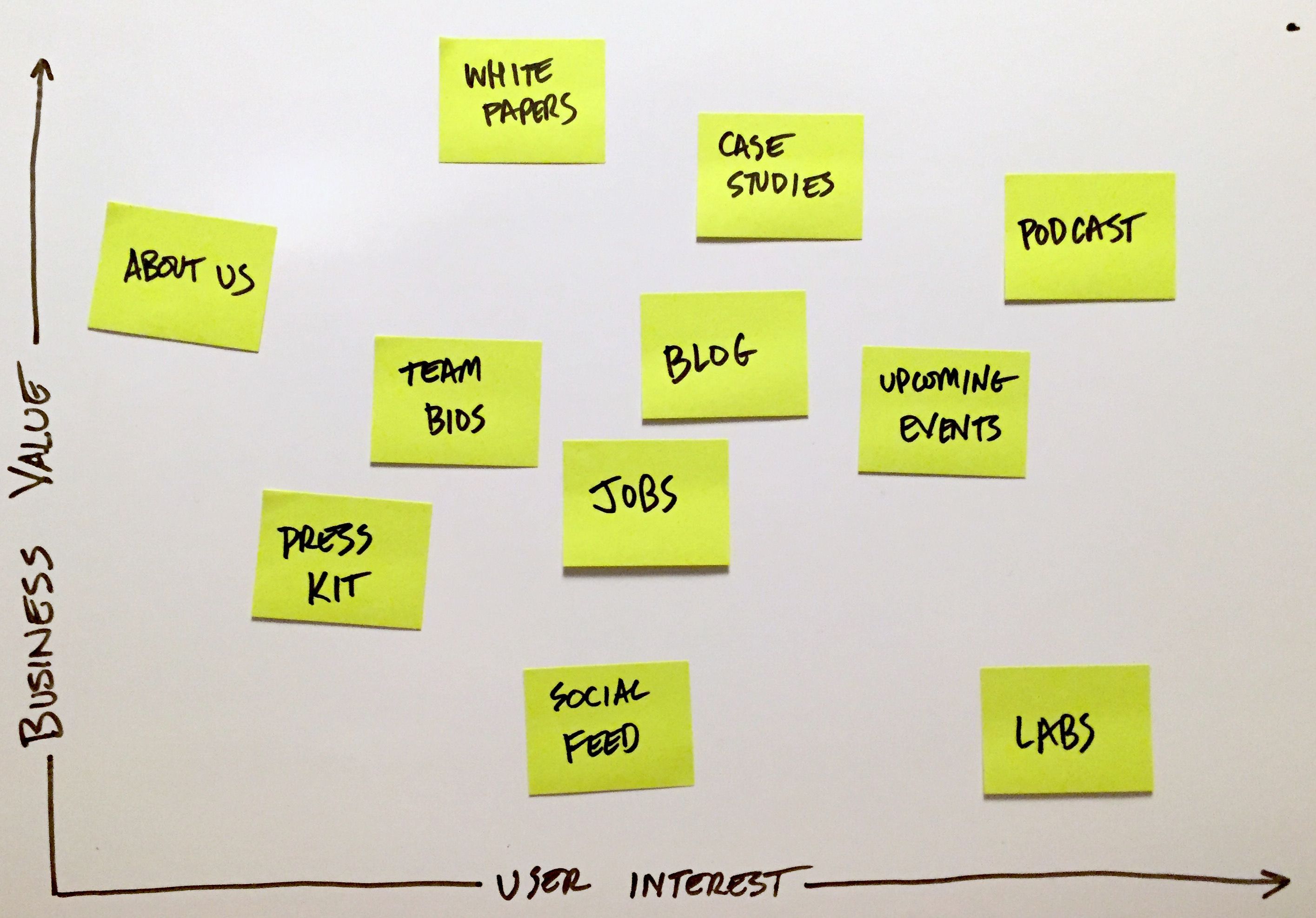At a recent client design workshop, the Lullabot team ran into a classic prioritization challenge: tension between the needs of a business and the desires of its customers. Our client was a well-known brand with strong print, broadcast, and digital presences—and passionate fans who’d been following them for decades. Our redesign efforts were focused on clearing away the accumulated cruft of legacy features and out-of-control promotional content, but some elements (even unpopular ones) were critical for the company’s bottom line. Asking stakeholders to prioritize each site feature gave deeply inconsistent results. Visitors loved feature X, but feature Y generated more revenue. Which was more important?
Multi-Axis Delphi Sort to the Rescue, Yo
Inspired by Alberta Soranzo and Dave Cooksey’s recent presentation on advanced taxonomy techniques, we tried something new. We set up dual-axis card sort that captured value to the business and value to the user in a single exercise. Every feature, content type, and primary site section received a card and was placed on a whiteboard. The vertical position represented business value, horizontal represented value to site visitors, and participants placed each card at the intersection.
In addition, we used the “Delphi Card Sorting” technique described in the same presentation. Instead of giving each participant a blank slate and a pile of cards, we started them out with the results of the previous participant’s card sort. Each person was encouraged to make (and explain) any changes they felt were necessary, and we recorded the differences after each 15-minute session.

The results were dramatic. The hands-on, spatial aspect of card sorting made it fast and easy for participants to pick up the basics, and mapping the two kinds of “value” to different axis made each stakeholder’s perspectives much clearer. Using the Delphi sorting method, we quickly spotted what features everyone agreed on, and which required additional investigation. Within an hour, we’d gathered enough information to make some initial decisions.
The Takeaway
Both of the tools we used—Delphi sorting and multi-axis card sorting—are quick, easy, and surprisingly versatile additions to design workshops and brainstorming sessions. Multi-axis sorts can be used whenever two values are related but not in direct conflict; the time to produce a piece of content versus the traffic it generates is another great example. Delphi sorting, too, can be used to streamline the research process whenever a group is being asked to help categorize or prioritize a collection of items.
Based on the results we’ve seen in our past several client engagements, we’ll definitely be using these techniques in the future.